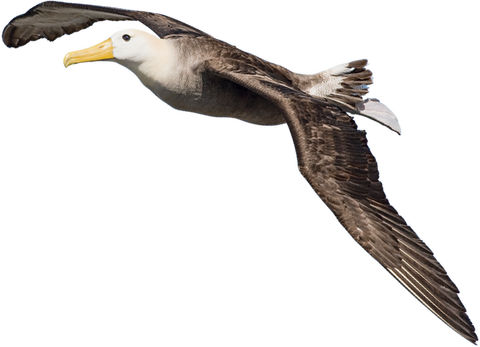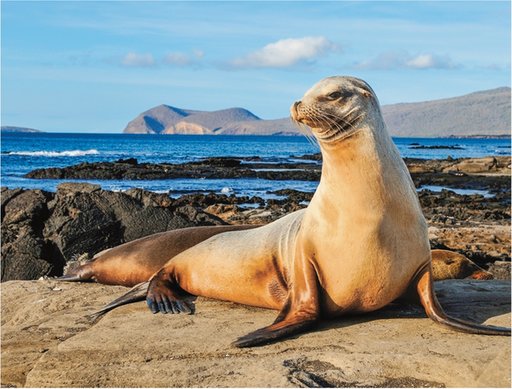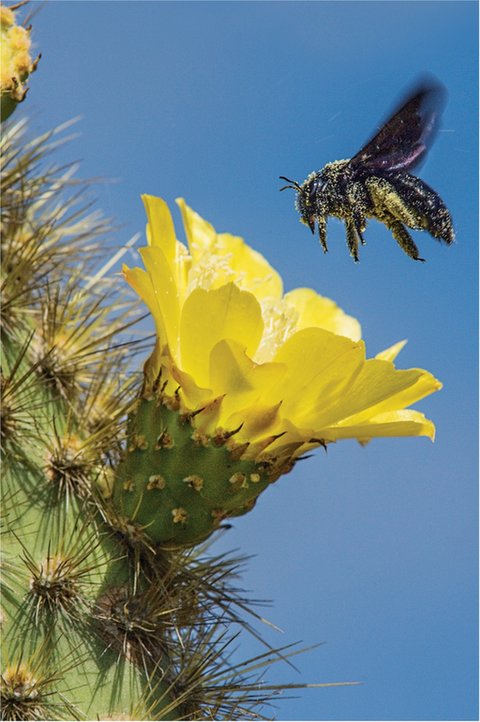NoTwoAlike
Eachislandisunique.Españolahassoftwhitesand.Floreanahassandlikebrownsugar.You’llalsoseetinygreenspecksofthegemstoneperidot.Andwatchout!Genovesa’sbeachesaremadeupofrazor‑sharp rocks.
Olderislandsaremorelushandgreen.They’vehadmoretimeforplantsandanimalstogrowandlive.Erosionfromwindandwavesbreaksrocksdownintofertilesoil.Treesandotherplantstakeroot.Theycreategoodplacesforanimalsto live.


Waved albatrosses
ruletheskies over
theGalápagos islands.

Sealionsbaskonvolcanic rock.
ComingtoGalápagos
TheGalápagosarelightlypopulated.Fiveoftheislandshaveonlyabout30,000people.Yet,theislandshostsomeofthestrangestbiodiversityinthe world.
MostplantsandanimalslivingtheretodaytraveledfromSouthAmericalongago.Someofthefirstanimalswereprobablybirds.Seabirdsmayhavecometotheislandsfora restingornestingplace.Theybroughtseedsfromthemainland.Thenthoseseedstookrootand grew.
Overtime,manyplantshavetakenrootandgrownalloverthis island.
BySeaandByAir
Otherseedsfloatedtotheislands.Mangroveseedsarewaterproof.Theyalsoareweightedononeend.Oceanwavescarrythemuntiltheyhitashoreline.Thentheytip,heavy‑sidedown,andtake root.
Insectsarrivedontheislandaswell.Somespeciesofbeetlehadwingsstrongenoughtoflythere.Galápagosspiders“ballooned”theirwayacrosstheocean,carriedbythe winds.

Longago,gianttortoisesfloatedto theGalápagosfromSouth America.

ManyGalápagosflowersbloomwhiteoryellow.Thesecolorsdrawthe islands’ bees.
Carpenterbeesarrivedbymistake.Theylaytheireggsindriftwood.Someofthiswater‑bornwoodwascarriedbytheoceantothe islands.
Whataboutlargeranimals?Gianttortoisescan’tswim,buttheycanfloat.Otherreptilesmayhavefloated,too.Withnopredatorstogobblethemup,thesecreaturessettledintotheirnew home.